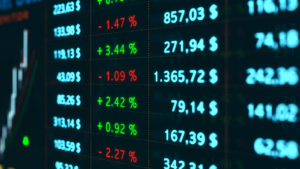Can equities still be rewarding in 2021?
In the final weeks of the year, there appear the inevitable reports on what eventuated in 2020, coupled with the near-universal view that 2021 is lining up as another risk-on whopper. Rates will remain range-bound, therefore we can bunker down in equities and anything else that takes our fancy outside of bonds.
History suggests that such assumptions, logical as they might be, should not be taken at face value. There are plenty of examples of dislocations that can disrupt.
High-yield spreads are around average, yet net leverage is double that of ten years ago. Credit duration is extending into the ether but that does not trouble buyers. Sovereign bond yields are contained, notwithstanding stratospheric debt levels.
Another different and prominent example is private debt. Globally, regulators micromanage the risks in the banking sector, while turning a blind eye to that of private lending. Regulated banks have one hand tied behind their backs given capital requirements and other imposts on what they can do. For those operating outside this circle there are no required ratings and little oversight. Direct investors will wear any loss, and regulators will tut, tut. In riskier asset classes the onus is on the investor, not a higher authority or index constraint.
Historically, rated credit has been treated as a low-volatility and lower-return asset class where concentration is a no-no. Yet most private lenders are about high returns and limited number of holdings with volatility sunk by irregular pricing. As much the issue is the cost to the borrower. Can the economy do as well as is assumed by equity markets with debt costs for small business at 5%-15%?
At a different level, the nascent origin of the populist movements has come from the great divide between the financial haves and have-nots. In the US, the top 1% of households now accrue 21% of total income. This is married with the growing fiscal deficit (even pre-COVID) and pension funding gap that will mostly affect lower-income groups. Investors seem as untroubled by this as they are by restricted voting class shares (again a US phenomenon) and a persistent pattern of governance failures.
Self-stabilising functions have fallen by the wayside. Interest rate signals can’t be used any more, given the risk of a run on the financial sector – in 2008 it was the banks that were too big to fail, today it’s financial markets. Inflation no longer acts as a guide on capacity within the economy.
Such grumbling may not lead to a specific investment conclusion, but one’s view on how this unfolds should be tied up in asset allocation. If a return to economic growth is matched by a gentle reining-in of leverage and rebalancing, equities are unlikely to be as rewarding as recent years, while credit looks good. If debt is just a word, staying long equity and holding gold (or bitcoins) is the likely solution.
FX is the potential swing indicator and the recent downward move in the USD implies that deleveraging is not yet on the cards. Rather than watching rates (nothing to see here), getting across the machinations of the foreign exchange markets may be the better way to judge where we are heading.
The more commentators reassure us that 2021 is going to be just fine, the more we may need to take care that portfolios don’t wallow in the assumption that this will necessarily be the case.











